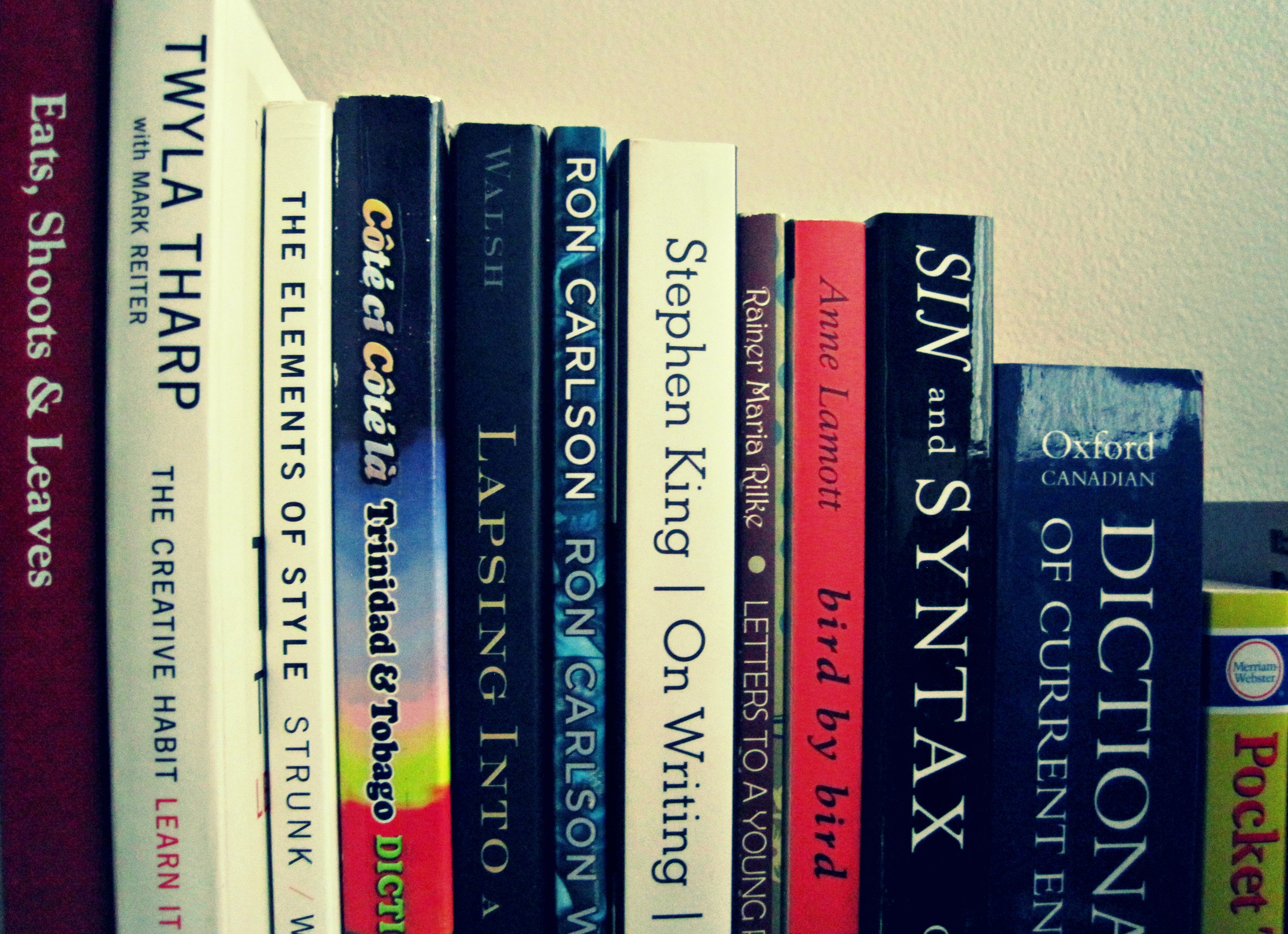With this series of posts I’m inviting you to take a peek at some of the things that keep me in the writerly way of being. Sometimes, we’ll just sit together at home. At other times, I’ll take you out-and-about with me.
Today, the rain and wind looks more than a little frightful, so let’s stay in …
My mother once impressed upon me (during a moment of exasperation over the condition of my bedroom) the idea that “the state of a person’s space reflects the state of their mind.”
Ever seen a writer’s desk, up close and personal? I wish someone would put together a picture book of the places where writers ‘set up shop’ and sit down to work. Famous or fledgling, it wouldn’t matter to me. I’d marvel at every photo, viewing each one as a delicate ecosystem, powered by the ever-in-flux sensibility of its one true Creator …
In other words, writers have a tendency to sit in chaos. (Not me, though. No, no. My workspace is immaculate. Really. Just … call first before you come over.) In those many diverse and gorgeous messes, you might find a commonality : at least one book on writing. I’ve got a little collection.

Brushing Up on the Rules
Dictionary and Thesaurus? Of course. But I love a good style guide.
Strunk & White’s Elements of Style has been a staple for writers since the late 1950s. In 2005, a revamped version (including illustrations by Maira Kalman) brought new life and visual appeal to the guide. The words remain basically the same (with some additions to consider the influence of technology on writing) with universal offerings like the following reminder:
Write in a way that draws the reader’s attention to the sense and substance of the writing, rather than to the mood and temper of the author. If the writing is good … the author will be revealed and not the expense of the work … to achieve style, begin by affecting none – that is, place yourself in the background. (Strunk & White, p. 100)
Clever writing can be found in the likes of Lynne Tuss’s Eats, Shoots & Leaves and Bill Walsh’s Lapsing into a Comma.
Walsh obviously had a good time writing his book. He uses witty headlines like ‘Sloppy Similes: Why Does Paul McCartney Want Me to Live in His Piano?’ and ‘Dirty Mind, Clean Copy: Why Every Copy Desk Could Use a 15-Year-Old-Boy’ while still providing useful knowledge in the field.
It’s such a pleasant feeling to be entertained by, of all things, a style guide. What an age we live in!
Masterclass in the Palm of Your Hand
Stephen King’s On Writing is only most recognizable titles out there when it comes to well-known writers talking about the craft. It’s at the top of the list alongside Margaret Atwood’s Negotiating with the Dead and Anne Lamott’s Bird by Bird.
What I love about King’s book is the balance of memoir and musings. It’s equal parts personal and instructive, and neither element comes off as insincere or preachy. There’s so much good, I can’t begin to decide on an excerpt to offer here. My recommendation: find a copy and just read it, cover to cover. Any writer – regardless of genre or aesthetic – will find something of value to take away from those pages.
Thoughts on process and practise doesn’t necessarily have be about the written form to benefit authors seeking some guidance. Take Twyla Tharp’s The Creative Habit. Tharp is a world-renowned dancer and choreographer who, like any established member of the arts community, had a few things to say about living in the creative field:
The first steps of a creative act are like groping in the dark: random and chaotic, feverish and fearful, a lot of busyness with no apparent or definable end in sight … You can’t just dance or paint or write or sculpt. Those are just verbs. You need a tangible idea to get you going. The idea, however minuscule, is what turns the verb into a noun – paint into a painting, sculpt into a sculpture, write into [a written work], dance into a dance. (Tharp, p. 94)
Tharp’s refreshing and thoughtful look at being creative is just one way to see craft from a different perspective.
A List of To-Reads
My writing colleague is currently reading Stet by lauded editor Diana Athill, and I’m looking forward to her notes about it before I take a look at it myself. I’ve heard great things about Annie Dillard’s The Writing Life, and Natalie Goldberg’s Zen-inspired Wild Mind and Writing Down the Bones.
How about you? Which books do you turn to, time and time again, when you’re in need of some well-worn wisdom?
Until next time, be well & carry an umbrella and a good book.
Great post! You’ve listed some of my favourites and others I will have to take a look at.
One guide I found useful was ‘How to Write a Lot: A Practical Guide to Productive Academic Writing’ by Paul J. Silvia. While it is primarily targeted to academics, it’s a quick read with tips on setting schedules, breaking bad habits and, even, starting an ‘agraphia’ group. I think any writer would benefit from Silvia’s advice.
LikeLike
Thanks for your recommendation, AB. 🙂 Writers could always use new insights on productivity.
LikeLiked by 1 person